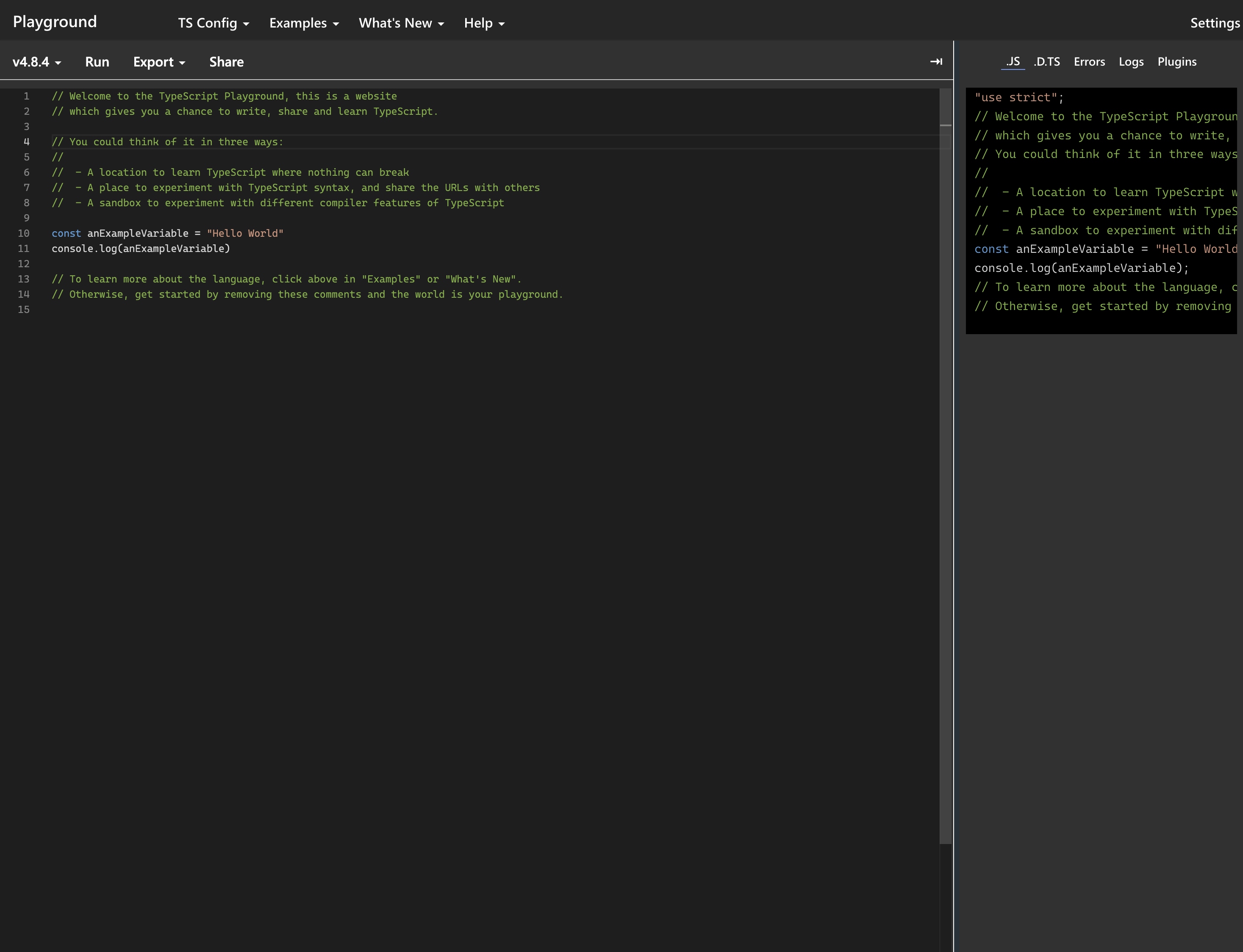Typescript tutorial
In this tutorial, we will learn some basic typescript concepts and how to use them in our code.
Typescript basics
Basic typing
Typescript is a typed language, which means that we need to specify the type of the variables we are using. This is not required in javascript, but it is a good practice to use it. Here are some basic types:
string- a string of charactersnumber- a numberboolean- a boolean valueany- any type of valuevoid- no type
Let's see some examples:
let myString: string = 'Hello world';
let myNumber: number = 42;
let myBoolean: boolean = true;
let myAny: any = 'Hello world';
let myVoid: void = undefined;
Arrays
We can also specify the type of the elements in an array:
let myArray: number[] = [1, 2, 3];
We can also define a mixed-type array:
let myArray: any[] = [1, 'Hello world', true];
Functions
We can also specify the type of the parameters and the return value of a function:
function myFunction(param1: string, param2: number): string {
return param1 + param2;
}
Interfaces
Interfaces are used to define the structure of an object. Let's see an example:
interface Person {
name: string;
age: number;
}
let myPerson: Person = {
name: 'John',
age: 42
};
console.log(myPerson.name); // John
console.log(myPerson.age); // 42
Classes
Classes are used to define the structure of an object. Let's see an example:
class Person {
name: string;
age: number;
constructor(name: string, age: number) {
this.name = name;
this.age = age;
}
greet() {
console.log(`Hello, my name is ${this.name} and I am ${this.age} years old.`);
}
}
let myPerson = new Person('John', 42);
myPerson.greet(); // Hello, my name is John and I am 42 years old.
Control flow
Typescript supports the same control flow statements as javascript:
ifelseforwhileswitchtry/catch
Let's see an example:
let myNumber: number = 42;
// if statement
if (myNumber === 42) {
console.log('The answer to the ultimate question of life, the universe and everything.');
} else {
console.log('The number is not 42.');
}
// for loop
for (let i = 0; i < 10; i++) {
console.log(i);
}
// while loop
let i = 0;
while (i < 10) {
console.log(i);
i++;
}
// switch statement
switch (myNumber) {
case 42:
console.log('The answer to the ultimate question of life, the universe and everything.');
break;
default:
console.log('The number is not 42.');
}
// try/catch
try {
throw new Error('An error occurred.');
} catch (e) {
console.log(e.message);
}
Modules
Typescript supports modules, which are used to split our code into multiple files. Let's see an example:
// person.ts
export class Person {
name: string;
age: number;
constructor(name: string, age: number) {
this.name = name;
this.age = age;
}
greet() {
console.log(`Hello, my name is ${this.name} and I am ${this.age} years old.`);
}
}
// main.ts
import { Person } from './person';
let myPerson = new Person('John', 42);
myPerson.greet(); // Hello, my name is John and I am 42 years old.
You can check more typescript examples in typescript official documentation.

TS-Node
TS-Node is a typescript interpreter that allows us to run typescript code without compiling it. Let's see an example:
Before running the code, we need to install ts-node globally:
npm install -g ts-node
Create a file named main.ts and add the following code:
//main.ts
console.log('Hello world');
$ ts-node main.ts
Hello world